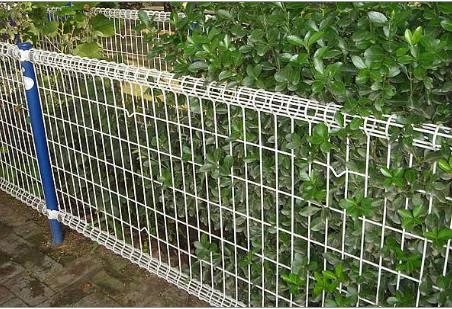When it comes to enhancing the security and aesthetic appeal of your property, selecting the right type of fencing is crucial. Among various options available, link fences offer a unique blend of durability, affordability, and adaptability. However, understanding the cost implications of installing a link fence is vital for making an informed decision. This article delves into the various factors affecting link fence costs, aiming to provide a thorough, expert-guided insight into making the best investment for your property.

Link fences, often known as chain-link fences, have been a popular choice for many homeowners and businesses due to their rugged design and long-lasting nature. One of the most attractive features of link fences is their cost-effectiveness compared to other fencing options like wood, wrought iron, or vinyl. The affordability of link fences primarily stems from the materials used, which are usually galvanized steel or aluminum, both offering excellent resistance to weather and environmental damage.
Several factors influence the overall cost of installing a link fence. First, the height and length of the fence are significant determinants. Typically, chain-link fences range from three to twelve feet high, with the price increasing as height increases due to the additional material required. Similarly, the longer the fence, the higher the cost, as more material and labor are needed to cover extended areas.

Another critical factor is the thickness and coating of the wire used in the fence. Thicker wire gauges are more expensive due to their added strength and durability, making them ideal for high-security areas or locations with extreme weather conditions. Additionally, coatings such as vinyl or paint add an extra layer of protection against rust and corrosion, increasing both lifespan and cost.
The installation process itself can greatly affect costs. While some individuals may opt for a DIY approach to save money on labor, professional installation guarantees the fence is erected securely and efficiently. Professional installers bring expertise and often provide warranties on their work, ensuring peace of mind. The terrain on which the fence is being installed also plays a role; uneven or rocky surfaces may require additional preparation and materials, subsequently increasing labor costs.
link fence cost
Additional components such as gates, privacy slats, or barbwire can also add to the cost. Gates require specific hardware and, depending on the level of security needed, can vary in price. Privacy slats, which are inserted into the fence links for added privacy, offer enhanced confidentiality but at an additional expense. For properties requiring high security, incorporating barbed wire or similar deterrents will further raise installation costs.
Despite the initial expense, the long-term benefits of a well-installed link fence are considerable. These fences require minimal maintenance, with periodic checks and occasional washing being sufficient to keep them in top condition. This low-maintenance nature translates into long-term savings, making link fences an economically sound choice over time.
From a professional standpoint, choosing a link fence should involve careful consideration of your specific needs and the environmental conditions of the installation site. Seeking advice from reputable suppliers and installation experts can provide valuable insights, ensuring that you select a fence that not only fits your budget but also meets your security and aesthetic requirements.
In conclusion, while the upfront cost of installing a link fence can be influenced by various factors such as height, material thickness, and additional features, the investment often yields significant benefits in terms of durability, security, and aesthetic appeal. As with any significant purchase, weighing immediate costs against long-term advantages will help you make the most financially prudent decision. By understanding these nuances, property owners can confidently choose the right link fence that aligns with their specific goals and budgetary considerations.
 TEL:
+86-13102802206
TEL:
+86-13102802206
 Email:
fencenetting@china.com
Email:
fencenetting@china.com
 Language
Language
 TEL:
+86-13102802206
TEL:
+86-13102802206
 Email:
fencenetting@china.com
Email:
fencenetting@china.com
 Language
Language



